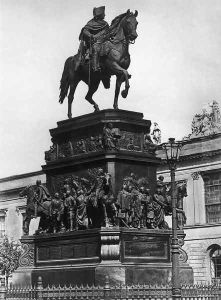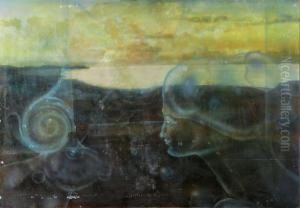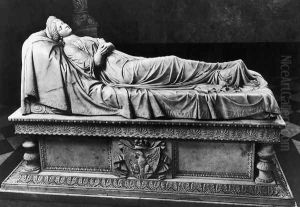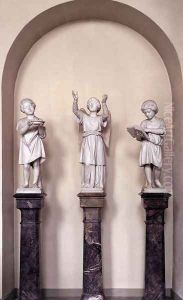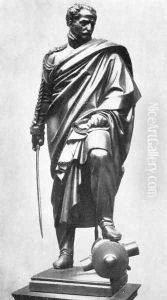Christian Daniel Rauch Paintings
Christian Daniel Rauch was born on January 2, 1777, in Arolsen, the capital of the small German principality of Waldeck. His early life was modest, as he was born into a family of gardeners employed at the court of Prince Frederick II of Waldeck. Despite the limitations of his rural upbringing, Rauch's artistic talents were recognized early, and he received his initial training in the arts within the princely court. This environment, albeit limited, provided him with the foundational skills and exposure to art that would fuel his later career. In 1790, at the age of thirteen, he moved to Kassel to work in the studio of the sculptor Valentin Sonnenschein, marking the beginning of his formal education in art.
Rauch's artistic journey continued to evolve as he moved to Berlin in 1797, where he worked in the studio of the renowned Prussian sculptor Johann Gottfried Schadow. This period was crucial for Rauch's development, as Schadow was a leading figure in the German Neoclassicism movement, which deeply influenced Rauch's own style. The mentorship and guidance of Schadow helped Rauch refine his technique and aesthetic sensibilities, aligning him with the ideals of Neoclassicism, characterized by its emphasis on harmony, simplicity, and the inspiration from classical antiquity.
In 1804, Rauch's career took a significant turn when he was invited to Rome by the Prussian ambassador. This opportunity allowed him to immerse himself in the study of ancient sculpture and the works of Renaissance masters, further enriching his artistic vocabulary. His years in Italy were transformative, enabling him to synthesize his Neoclassical leanings with a deeper understanding of the human form and the subtleties of expression and movement, which became hallmarks of his work.
Upon his return to Germany, Rauch began to receive commissions that would cement his reputation as one of the leading sculptors of his time. He became particularly known for his monuments and busts, which combined a meticulous attention to detail with a graceful elegance. His works not only captured the likeness of his subjects but also conveyed their character and stature. Among his most famous works is the monument to Queen Louise of Prussia, unveiled in 1814, which exemplifies his ability to infuse his sculptures with a sense of dignity and serene beauty.
Throughout his career, Rauch remained a pivotal figure in the German art scene, contributing significantly to the development of sculpture as a medium of personal and national expression. He was a mentor to many younger artists and played a key role in the establishment of the Prussian Academy of Arts. Rauch's legacy is not only in the works he left behind but also in his influence on the generation of sculptors who followed him. He passed away on December 3, 1857, in Dresden, leaving behind a body of work that continues to be celebrated for its artistic merit and historical significance.
